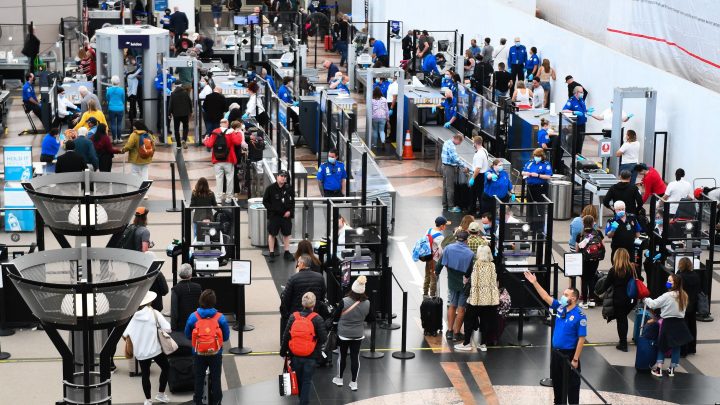
What a government shutdown could look like: “Things start breaking”
What a government shutdown could look like: “Things start breaking”

Congress faces yet another deadline — Friday at midnight — to pass a continuing resolution or other legislation to keep funding a big chunk of what the federal government does.
Stuff that’s defined as “discretionary” spending: like paying federal workers, keeping the national parks open, overseeing farm and food-safety programs, and financial markets at federal agencies like the Agriculture Department, FDA and SEC.
If another government shutdown does happen — the last one stretched from December 2018 into early 2019 — “essential” services and mandatory programs would continue: social security and Medicare, border control and military operations, TSA checkpoints and air traffic control.
But hundreds of thousands of federal workers would either be furloughed, or required to come to work — without pay.
And the economic impact of a shutdown could be minor, or major, depending on how long it lasts, and what else it triggers.
We’ve had government shutdowns before, including in 1995, 2013 and 2018.
The first major economic impact we see, said Mark Zandi, chief economist at Moody’s Analytics, is loss of income and a hit to consumer spending.
“Obviously it’s a hardship on federal government employees because they don’t get paid — whether they go to work or not, whether they’re essential or not, doesn’t matter — they’re not going to get paid,” he said.
In previous shutdowns, that’s affected about 850,000 federal workers.
Joe Brusuelas, chief economist at consulting firm RSM, predicts if a shutdown happens this time around: “We would expect a 0.2% drag per week on GDP.”
Though some of that economic activity would be made up, after the shutdown ended and federal workers got backpay.
Meanwhile, economic risks are already rising. Moody’s downgraded its outlook on the U.S. credit rating on Friday.
Mark Zandi can’t comment on the agency’s likely next steps. But he does have some predictions about what would happen in a prolonged government shutdown.
“If it goes on for a month, six weeks, things start breaking,” he said. “TSA workers — they just don’t come to work, because they go get other jobs, because they have to pay the bills; or air traffic controllers. So the airports start getting clogged up, and people get really upset at that.”
The current fight over government funding, and previous brinkmanship over the debt ceiling, have damaged the U.S.’s reputation, said Adam Posen, president of the Peterson Institute for International Economics.
“Lack of governance prompted by the successive House Republican leaderships echoes Italy, Argentina and other fiscal basket cases in a way we haven’t seen in the past,” he said.
Posen warned that these moments come with a cost. “Increasingly people are going to get worried. And there will be interest rate movements, and therefore currency movements and flows of funds,” he said.
Out of the U.S., for other developed economies that appear more stable and better-run.
There’s a lot happening in the world. Through it all, Marketplace is here for you.
You rely on Marketplace to break down the world’s events and tell you how it affects you in a fact-based, approachable way. We rely on your financial support to keep making that possible.
Your donation today powers the independent journalism that you rely on. For just $5/month, you can help sustain Marketplace so we can keep reporting on the things that matter to you.











